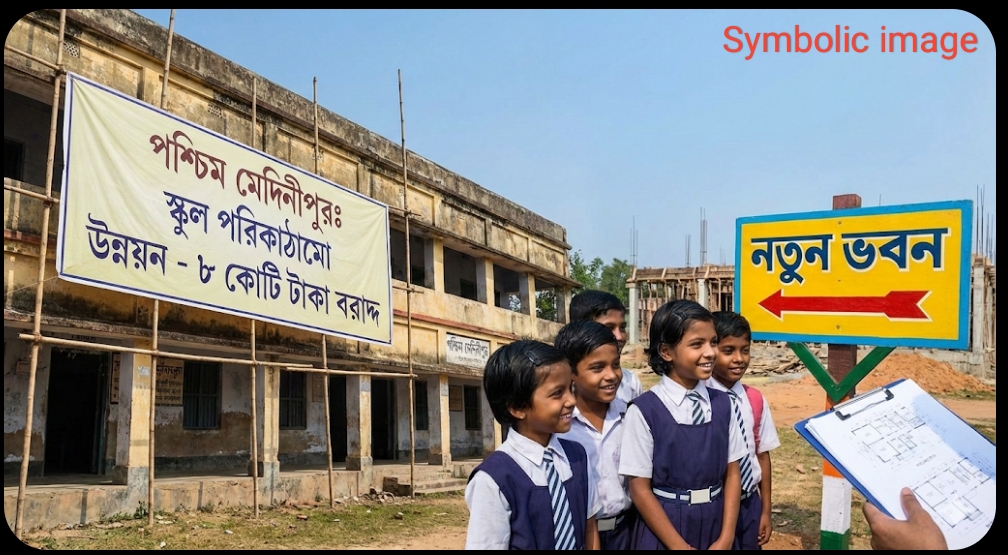वंदे भारत एक्सप्रेस पर पत्थरबाजी करने वाले गिरफ्तार, भेजे गए जेल चलती ट्रेन में TTE बने ‘भगवान’, CPR देकर बचाई बुजुर्ग यात्री की जान






चलती ट्रेन में TTE बने ‘भगवान’, CPR देकर बचाई बुजुर्ग यात्री की जान



एकबार फिर चलती ट्रेन में टीटीई ने ‘भगवान’ बनकर एक यात्री की जान बचाई है। छपरा में यात्रा के दौरान अचानक अचेत हुए बुजुर्ग की जान बचाने के लिए भारतीय रेल के टीटीई राजीव कुमार और मनमोहन ने पूरी जान लगा दी। चलती ट्रेन में बुजुर्ग को सीपीआर (Cardiopulmonary Resuscitation) और माउथ-टू-माउथ ऑक्सीजन सपोर्ट देने की वजह से उनकी जान बच गई।

दरअसल अमृतसर से हाजीपुर जा रही आम्रपाली एक्सप्रेस (15708) के जनरल कोच में एक बुजुर्ग दंपत्ति यात्रा कर रहे थे। अचानक 70 वर्षीय बुजुर्ग की तबियत बिगड़ी और वो अचेत हो गए। तभी उनकी पत्नी चिल्लाते हुए मदद की गुहार लगाने लगी। महिला को देख टीटीई राजीव कुमार और मनमोहन कुमार मौके पर पहुंचे। बुजुर्ग की स्थिति को देख बिना समय गवाएं वो CPR और माउथ-टू-माउथ ऑक्सीजन सपोर्ट देना शुरू किया। करीब 5 मिनट तक लगातार कोशिश के बाद यात्री की स्थिति में सुधार दिखना शुरु हो गया। जिसके बाद बुजुर्ग ने अपनी आंखें खोली और उठकर बैठ गए। जिसके बाद कोच में मौजूद सवारियों ने कहा कि टीटीई साहब भगवान का दूत बनकर आए हैं। ट्रेन के छपरा पहुंचने के बाद डॉक्टरों ने उनका इलाज किया और सिविल अस्पताल रेफर कर दिया।
REGULATION OF TRAINS
DUE TO DEVELOPMENTAL WORKS IN ADRA DIVISION
Kolkata, 24th November, 2024
In view of developmental works in Adra Division, the following trains will be regulated as under:
Cancellation of Trains:
· 08680/08679 Adra-Midnapore-Adra MEMU Special will remain cancelled on 26.11.2024.
· 08644/08643 Asansol-Adra-Asansol MEMU Special will remain cancelled on 29.11.2024.
· 08671/08672 Adra-Bhaga-Adra MEMU Special will remain cancelled on 01.12.2024.
· 18019/18020 Jhargram-Dhanbad-Jhargram MEMU Express will remain cancelled on 25.11.2024.
Short Termination/Short Origination of Trains:
· 08174/08652 Tatanagar-Asansol-Barabhum MEMU Special, journey commencing on 29.11.2024 will be short terminated at/short originated from Adra.
· 18035/18036 Kharagpur-Hatia-Kharagpur Express, journey commencing on 25.11.2024 will be short terminated at/short originated from Adra.
Diversion of Train:
· 18601 Tatanagar-Hatia Express, journey commencing on 25.11.2024, 26.11.2024, 27.11.2024 & 30.11.2024 will run on diverted route via Chandil-Gunda Bihar-Muri.
Railways and Gati Shakti form an unbeatable partnership
In One Day International cricket, Sachin Tendulkar and Sourav Ganguly formed a formidable partnership with 26 combined centuries. Just as they dominated the cricket field, the partnership between Indian Railways and PM GatiShakti-National Master Plan (PMGS-NMP) is proving to be a game-changer for India’s infrastructure development in line with demand.
This transformational approach facilitates the breaking of silos across various departments, Ministries, States, and Union Territories. GatiShakti is now a cornerstone of infrastructure planning and decision-making, its implementation extending to division-level construction organisations across the breadth of the national transporter. Through this, Railways has fully assimilated institutional framework and Geographic Information System (GIS) data-based digital platform–the two key elements for operationalizing PMGS.
GatiShakti channels Ganguly’s elegance and assertive leadership, while the Railways, like Tendulkar’s adaptability, tackles diverse challenges with finesse.
This integrated approach has significantly improved coordination between Infrastructure Ministries and Railway Zones, accelerating project approvals. Instead of the typical 4-5 months required for project survey sanctioning, this initiative reduced the approval time to just 7 days, significantly enhancing the efficiency of the entire railway network. 458 project surveys sanctioned in 2022-23 compared to around 50 in the past.
Although Railways has historically coordinated with other government agencies, the integration of multiple transport modes through PMGS—leveraging advanced digital platforms and real-time monitoring—has revolutionized India’s infrastructure ecosystem. Through better coordination across railway zones, departments, and sectors, PMGS is now a model for holistic infrastructure planning and execution.
One of the most visible impacts of PMGS is breaking down departmental silos. Traditionally, seven different departments work independently on various aspects of railway infrastructure development, resulting in delays and inefficiencies. By fostering inter-departmental communication and leveraging digital platforms, project sanctioning has been expedited and unnecessary bureaucratic hurdles have been eliminated.
Implementation of PMGS has resulted in significantly improved planning with 73 projections being sanctioned in the fiscal year 2023-24 as compared to 6-7 projects approved annually before Gati Shakti. This is the maximum record so far in a financial year! Project delivery also reached record highs, with 5,309 kilometres of New Line, Doubling and Gauge Conversion projects completed. Rail electrification hit an all-time high of 7,188 route kilometres (RKM), and track commissioning accelerated from 4 km per day to 15 km per day.
Effectively, PMGS-NMP future-proofs infrastructure planning through detailed mapping of where, what, and when. It holds accurate and comprehensive data on social and economic infrastructure, trunk and utility networks, multimodal connectivity, tourist spots, land revenue maps, and forest boundaries, among others. This information is crucial for project planning and implementation.
All the projects are scrutinised by (NPG) Network Planning Group comprising all infrastructure ministries for integrated planning to avoid redundancies and situations like the breaking of newly laid roads for cable/pipe laying after its construction.
For instance, housing societies can now have sewage, electricity, and other utilities ready before residents move in and not wait for complaints to float in before taking any action. Warehouses near expanding suburbs can receive timely road connectivity ahead of demands rising, and ports undergoing expansion benefit from adequate railway evacuation and multimodal links.
This efficient planning capability is supported by the Bhaskaracharya National Institute for Space Applications and Geo-informatics (BISAG-N), which has played a pivotal role in developing PMGS-NMP.
A critical aspect of Gati Shakti’s success lies in prioritizing key infrastructure projects that would have the maximum impact on improving connectivity, efficiency, and logistics. Railways can now identify critical sectors for first- and last-mile connectivity, such as economic centres, mines, power plants, and logistics hubs, and plan freight corridors and port connectivity projects well ahead of demand. This infrastructure is prioritized based on the potential to drive economic growth and improve the ease of doing business in India.
The improvement is evident through better collaboration among all the 68 Divisions of 16 Railway Zones. Before Gati Shakti, each railway zone and each department operated somewhat in isolation, leading to delays, inefficiencies, and lack of coordination. The introduction of digital interfaces through PMGS-NMP provided a unified platform for cross-zone collaboration, allowing for the quick resolution of issues and smooth execution of projects.
However, I would like to share a word of caution for both PMGS and Indian Railways. While Sachin and Sourav excelled on the cricket field, they faced challenges in the political arena. Similarly, the strength of PMGS and the determination of the Railways should not be diluted by political projects that lack long-term benefits, as India approaches its century of independence.






